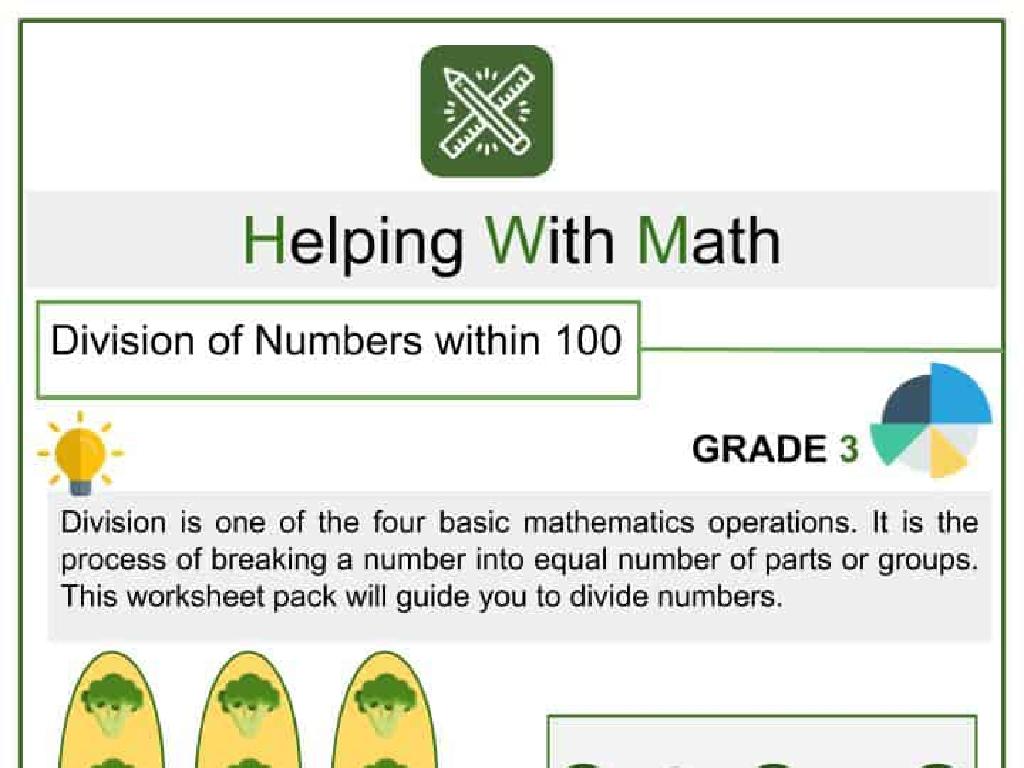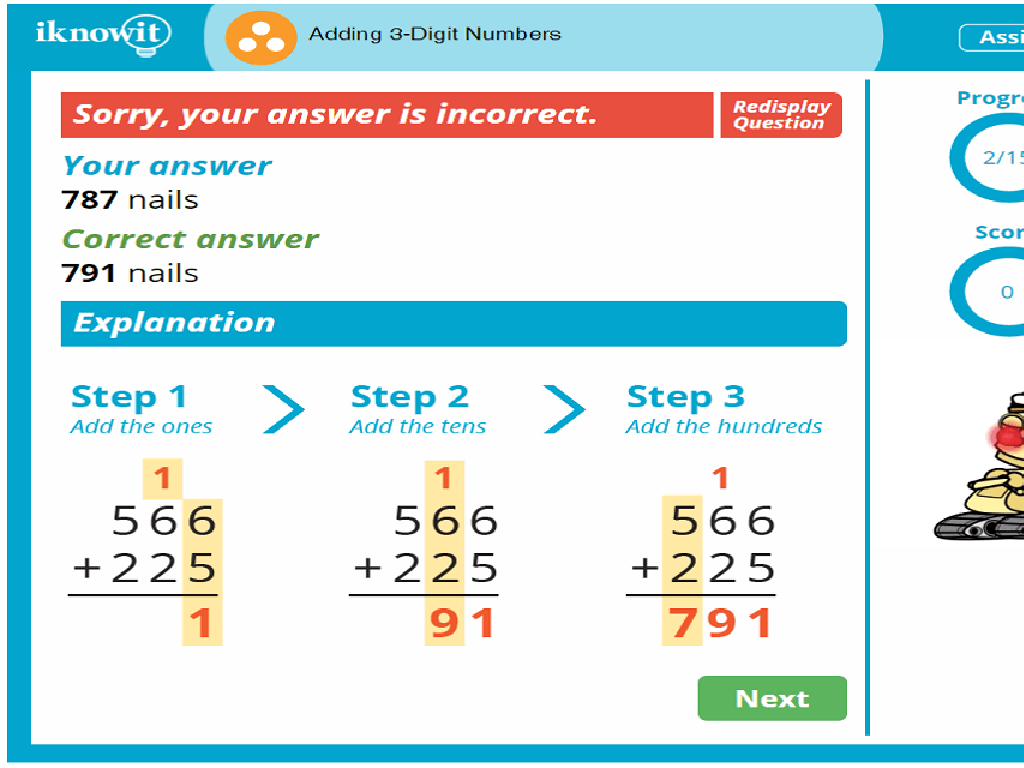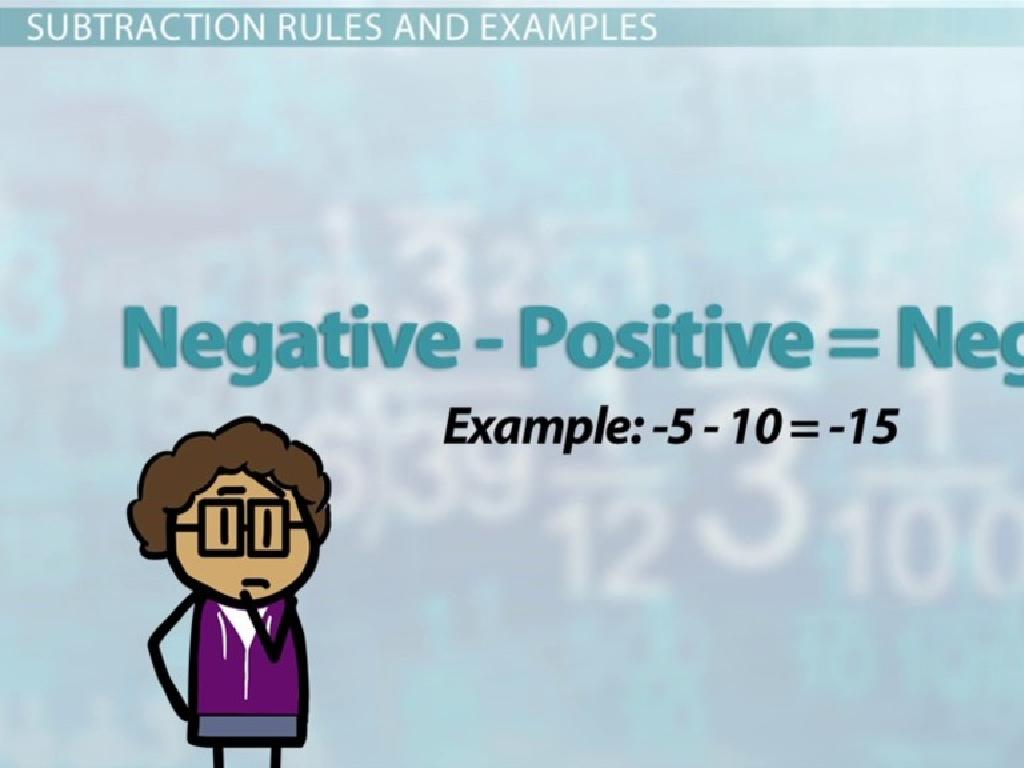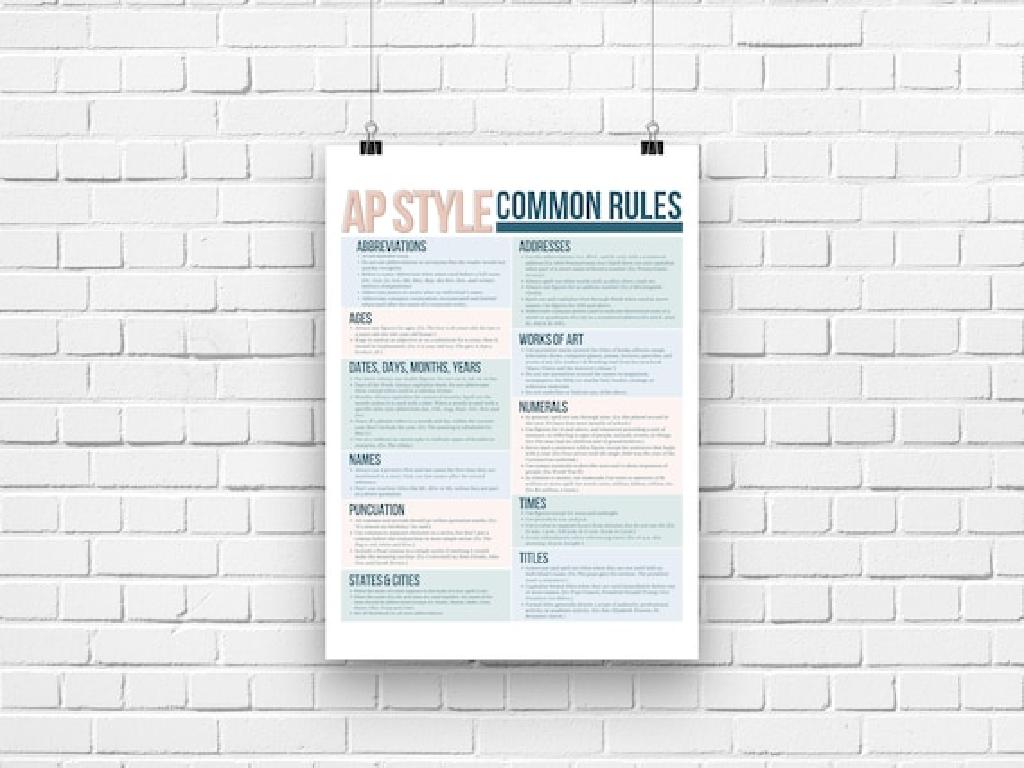Choose The Antonym
Subject: Language arts
Grade: Fifth grade
Topic: Synonyms And Antonyms
Please LOG IN to download the presentation. Access is available to registered users only.
View More Content
Exploring Synonyms and Antonyms
– Understanding word relationships
– Synonyms: Words with similar meanings
– ‘Happy’ and ‘joyful’ are synonyms
– Antonyms: Words with opposite meanings
– ‘Hot’ is the antonym of ‘cold’
– Practice with examples
– Find antonyms for ‘light’, ‘hard’, ‘fast’
|
This slide introduces the concept of synonyms and antonyms, which are fundamental to understanding the relationships between words. Synonyms are words that have similar meanings and can often be used interchangeably, which enriches our language and allows for more precise expression. Antonyms are words with opposite meanings, and they help us understand the contrast in our communication. During the presentation, provide students with clear examples of synonyms and antonyms, and encourage them to think of additional examples. For the practice section, guide them to use context clues or a thesaurus to find antonyms for the given words. This activity will enhance their vocabulary and comprehension skills.
Understanding Antonyms
– Define antonyms
– Words with opposite meanings, like ‘hot’ and ‘cold’
– Examples of antonyms
– ‘Big’ and ‘Small’, ‘Happy’ and ‘Sad’ show clear contrasts
– Significance of antonyms
– Knowing antonyms improves language skills and comprehension
– Enhancing vocabulary with antonyms
– Learning antonyms helps in expressing ideas more precisely
|
This slide introduces the concept of antonyms to the students, explaining that they are words with opposite meanings. Provide clear examples such as ‘big’ and ‘small’, ‘happy’ and ‘sad’ to illustrate the concept. Discuss why understanding and using antonyms is crucial for language development, as it enhances their ability to comprehend reading materials and express themselves more clearly. Encourage students to think of other antonym pairs and consider how changing one word to its antonym in a sentence can alter the meaning completely. This will help them appreciate the power of words and expand their vocabulary.
Choosing the Right Antonym
– Identifying antonyms in sentences
– Antonyms are words with opposite meanings. Look for clues!
– Using context for opposite meanings
– Read the sentence carefully to guess the antonym from the context.
– Practice with simple examples
– Let’s try finding antonyms for ‘happy’, ‘fast’, and ‘light’.
|
This slide is aimed at teaching students how to identify antonyms within the context of a sentence. Antonyms are words that have opposite meanings, such as ‘hot’ and ‘cold’. To determine the correct antonym, students should read the sentence and use contextual clues to infer the meaning. Provide simple examples that they are familiar with and encourage them to think of opposites. During the practice, use common words to help them grasp the concept easily. For instance, if the sentence is ‘He was very loud in the library’, ask students what the opposite of ‘loud’ might be in this context. The answer would be ‘quiet’. This exercise will enhance their vocabulary and comprehension skills.
Antonyms in Literature
– Find antonyms in stories
– Look for opposite words in your favorite books
– Understand characters via antonyms
– Characters can be brave or cowardly, find examples
– Activity: Spot antonyms in a paragraph
– Read a paragraph and highlight the antonyms you find
|
This slide aims to teach students how to identify antonyms within the context of literature, which can enhance their understanding of the text and character development. By finding antonyms in stories, students can see how authors use language to create contrast and express complex ideas. The activity involves reading a paragraph provided by the teacher and highlighting antonyms. This exercise will help students practice their analytical reading skills and improve their vocabulary. Encourage students to discuss how the antonyms relate to the characters or the situation in the story. This will also aid in developing critical thinking and comprehension abilities.
Game Time: Antonym Match-Up!
– Engage in a matching game
– Match words with their opposites
– Find antonym pairs on worksheet
– Look for words that mean the opposite
– Class review of answers
– Discuss findings and correct answers
|
This interactive game is designed to help students understand and practice identifying antonyms. Provide each student with a worksheet that has a list of words and their potential antonyms mixed up. Students will draw lines to match words with their opposites. After the activity, review the answers as a class to ensure understanding. Encourage students to explain why they think their matches are correct, fostering critical thinking. Possible variations of the game could include pairing up students, using flashcards, or creating a ‘memory’ style game where students find pairs on the board.
Create Your Own Antonyms
– Pick a word for antonym practice
– Think of many opposite words
– Share your antonyms with peers
– For example, if your word is ‘happy’, you might share ‘sad’, ‘upset’, or ‘gloomy’.
– Discuss antonyms’ impact on sentences
– How does replacing ‘happy’ with ‘sad’ change a story?
|
This slide is designed to engage students in an interactive class activity focused on understanding antonyms. Students are encouraged to select a word and brainstorm as many antonyms as they can. This exercise helps them expand their vocabulary and grasp the concept of opposite meanings. Afterward, they will share their list with the class, fostering a collaborative learning environment. The discussion portion will help students comprehend how the use of different antonyms can alter the meaning of a sentence, enhancing their critical thinking and language skills. Teachers should facilitate the activity by providing examples and guiding the discussion to ensure a comprehensive understanding of how antonyms work within the context of language.
Class Activity: Antonym Charades
– Engage in antonym charades
– Act out a word silently
– Use body language to express the word
– Classmates guess the antonym
– Think opposite! What could be the antonym?
– Learn antonyms interactively
– A fun way to reinforce our knowledge of antonyms
|
Antonym Charades is an interactive class activity designed to help students understand and remember antonyms by associating them with physical actions. Each student will take turns acting out a word without speaking, while the rest of the class tries to guess the antonym of the acted word. For example, if a student acts out ‘laughing’, the class might guess ‘crying’. This activity not only makes learning fun but also encourages students to think creatively and work collaboratively. Teachers should prepare a list of words with clear antonyms to ensure the activity runs smoothly and consider grouping students to promote teamwork. Remember to encourage respectful guessing and celebrate correct answers to maintain a positive learning environment.
Wrapping Up: Antonyms & Homework
– Recap on antonyms
– Antonyms are words with opposite meanings
– Why antonyms matter
– They enrich language and improve expression
– Homework: 10 antonym sentences
– Use antonyms from today to write sentences
– Bring sentences next class
|
As we conclude today’s lesson, remind students that antonyms are words with opposite meanings, such as ‘hot’ and ‘cold’. Emphasize how understanding and using antonyms can enhance their vocabulary and ability to express contrasting ideas. For homework, students should craft 10 sentences using antonyms discussed in class, demonstrating their grasp of how these words function in context. Encourage creativity and remind them to bring their sentences to the next class for discussion. This exercise will help solidify their understanding and provide an opportunity for assessment.






